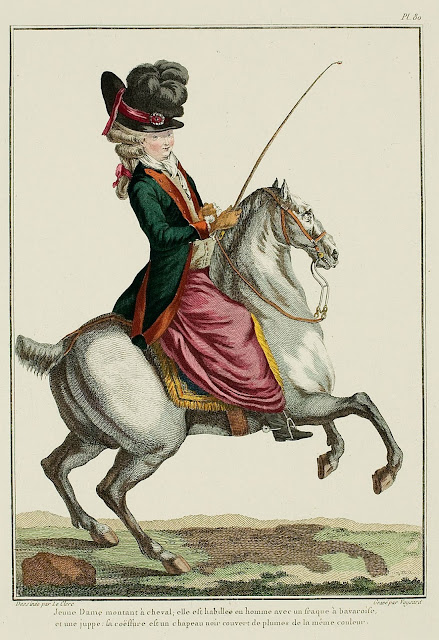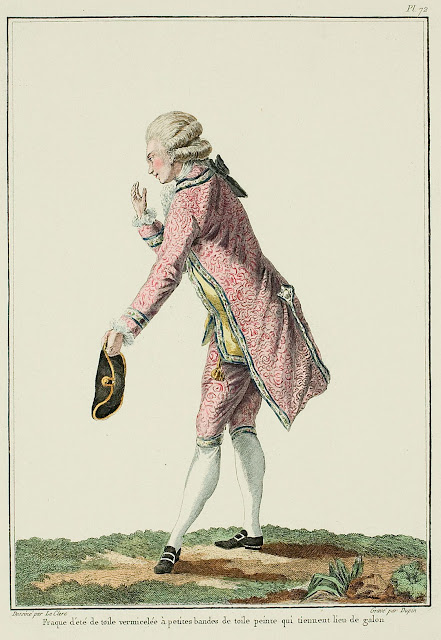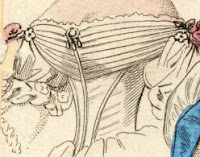Galerie des Modes, 21e Cahier, 3e Figure

Levite, with two pleats in the back, regular, stopped at the waist with a scarf that ends in tassels. Coiffure: a straw hat trimmed with gauze en pouf, trimmed with flowers. (1779) ROBE A LA LÉVITE . This is again one of the noble Gowns that the desire to ban constraint all in clothes caused to be adopted: the first idea for it is due to the Outfits created for the Actresses of the Théatre Française , when it put on the Tragedy of Athalie, with the Chorus. These Clothes, modeled on those of the Levites and the Priests, consisted of a type of Aube, with a stole which crossed it in front. This costume was entrenched in those worn by Priests; the stole changed into a belt, and soon it became a fashionable Dress. Such were the first Levites; they were worn first plain, without panniers or bouffantes ; but with time, they were stripped of this original simplicity, such that one will have occasion to notice it thereafter. To the notice which is found at the bottom of












